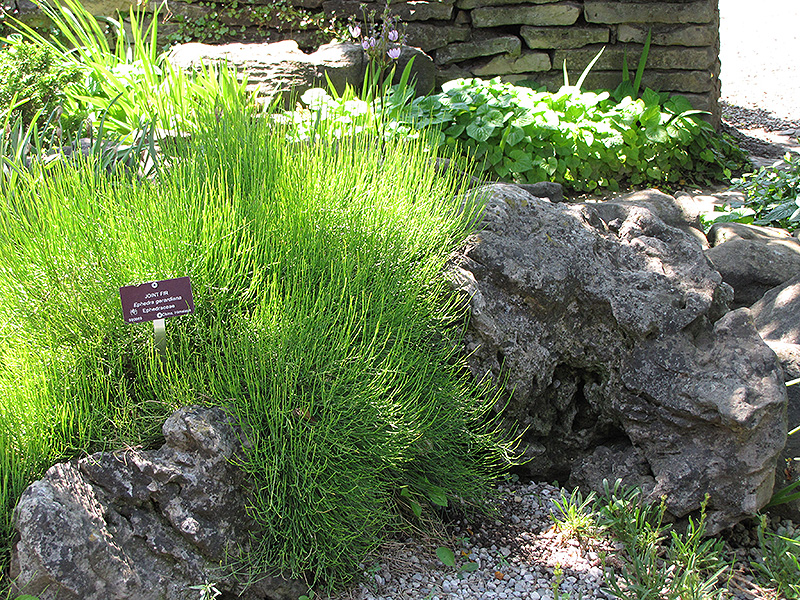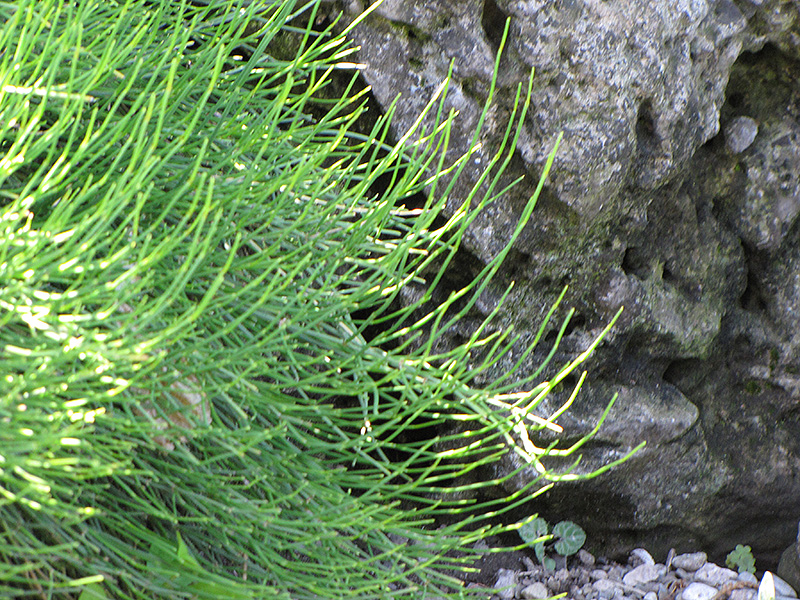Height: 18 inches
Spread: 4 feet
Sunlight:
![]()
Hardiness Zone: 4b
Other Names: Somolata
Description:
A unique grasslike alpine shrub perennial that is a gorgeous addition to the rock garden; stems at the heart of each plant tend to be more woody and the foliage displays a jointed effect and an upright habit; perfect as a cascading focal plant over rocks
Ornamental Features
Joint Fir features subtle bracted buttery yellow flowers along the branches in mid summer. It has green evergreen foliage. The grassy leaves remain green throughout the winter. It produces red berries in late summer.
Landscape Attributes
Joint Fir is a dense multi-stemmed evergreen shrub with an upright spreading habit of growth. It lends an extremely fine and delicate texture to the landscape composition which should be used to full effect.
This is a relatively low maintenance shrub, and is best pruned in late winter once the threat of extreme cold has passed. It has no significant negative characteristics.
Joint Fir is recommended for the following landscape applications;
- Rock/Alpine Gardens
- Groundcover
Planting & Growing
Joint Fir will grow to be about 18 inches tall at maturity, with a spread of 4 feet. It tends to fill out right to the ground and therefore doesn't necessarily require facer plants in front. It grows at a medium rate, and under ideal conditions can be expected to live for approximately 10 years.
This shrub should only be grown in full sunlight. It is very adaptable to both dry and moist growing conditions, but will not tolerate any standing water. It is considered to be drought-tolerant, and thus makes an ideal choice for a low-water garden or xeriscape application. It is particular about its soil conditions, with a strong preference for sandy, alkaline soils. It is somewhat tolerant of urban pollution. This species is not originally from North America.


